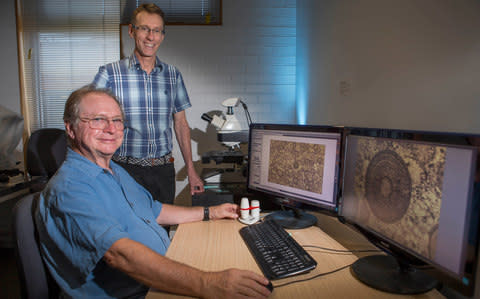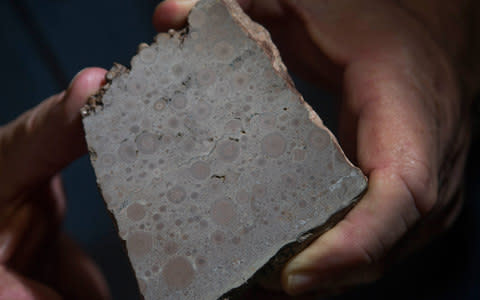Buckingham Palace is riddled with ancient fossils, scientists confirm

Republicans and anti-monarchists have long grumbled that Buckingham Palace is riddled with fossils from a bygone era.
And now scientists have shown, that in one respect, it’s true.
A new study led by the Australian National University (ANU) has found that the building blocks used in the royal palace were made from microbes which lived up to 200 million years ago, in the Jurassic period, when dinosaurs roamed the Earth.
The material, known as oolitic limestone, is popular for building because it is lightweight but very strong.
It is almost completely made up from tiny millimetre-sized sphere of carbonate called ooids.
Previously scientist thought those ooids had formed from tiny bits of grit or sand rolling around on the sea-bed, collecting more layers, in what was known as ‘the snowball effect.’

Over time those little balls became compressed into layers which formed sedimentary rock.
But Dr Bob Burne from ANU found that ooids are actually made from concentric layers of mineralised microbes, tiny cellular organisms and are mostly divided up into bacteria, fungi and viruses.
“We have proposed a radically different explanation for the origin of ooids that explains their definitive features,” said Dr Burne from the ANU Research School of Earth Sciences.
“Our research has highlighted yet another vital role that microbes play on Earth and in our lives.”

Humans have used ootic limestone for building since ancient times and there are beds in the United Kingdom, which is why it is so popular in Britain.
Jurassic oolite in England was also used to construct much of the City of Bath, the British Museum and St Paul’s Cathedral.
Elsewhere, oolite from Indiana in the US was used to build parts of the Pentagon and the Empire State Building.
Professor Murray Batchelor from ANU led an international team of researchers on the study, which is published in Scientific Reports.

The team used computer modelling to run simulations of how the rock could have been created and found that only microbes could explain the size of the ooids, and their concentric internal banding, which looked like tree rings.
“Our mathematical model explains the concentric accumulation of layers, and predicts a limiting size of ooids,” said Professor Batchelor from the Research School of Physics and Engineering and the Mathematical Sciences Institute at ANU.
“We considered the problem theoretically using an approach inspired by a mathematical model developed in 1972 for the growth of some brain tumours.”
Professor Batchelor said the research findings could help better understand the effects of past climate change.
The reserach was published in the journal Scientific Reports.

 Yahoo News
Yahoo News 